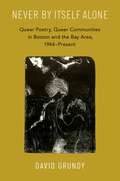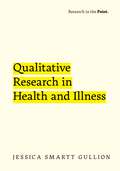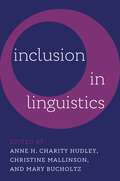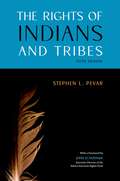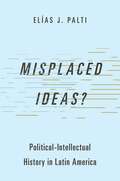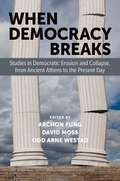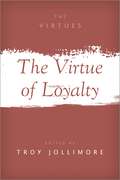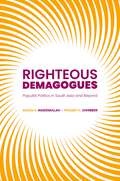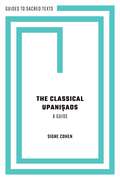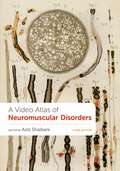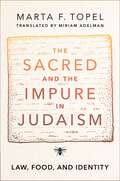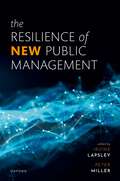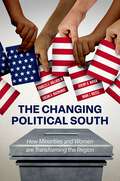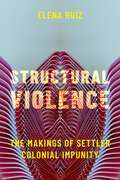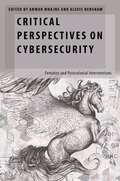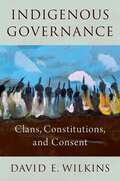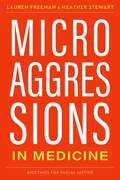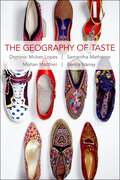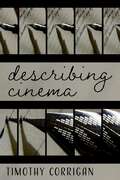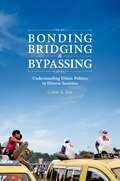- Table View
- List View
Never By Itself Alone: Queer Poetry, Queer Communities in Boston and the Bay Area, 1944?Present
by David GrundyProviding an unprecedented exploration of key moments in queer literary history, Never By Itself Alone changes our sense of both the American literary and political landscapes from the late 1940s through the 21st century. Grundy presents the first comprehensive history of post-war queer writing in Boston and San Francisco, intertwining analysis of lesbian, gay, and queer writing, and insisting on the link between activism and literature. The book centers a host of underrepresented writers, especially writers of color and those with gender non-conforming identities, and challenges the Stonewall exceptionalism of queer historiography. Starting with Robert Duncan's 1944 essay, 'The Homosexual in Society', one of the first significant public defenses of homosexuality in the US, Grundy takes the reader through pioneering works by queer voices of the era, including Adrian Stanford's Black and Queer, the first published book by an out, Black gay poet in the US; the Boston collective Fag Rag and their radical reconsideration of family, private property and the State; the Combahee River Collective, whose Black Feminist analysis drew together race, class, and sexuality; the anthology This Bridge Called My Back, in which women of color spoke truth to power, together; and New Narrative writing, which audaciously mixed Marxism, porn and gossip while uniting against the New Right. Linking these works to the context which produced them, Grundy uncovers the communities formed around activism and small press publishing during this era and elevates neglected voices to narrate a history that before now has never been told in its entirety. Drawing on extensive archival research, Never By Itself Alone is a rigorous and unmatched work of both literary criticism and queer scholarship which underscores the vital importance of radical accounts of race, class, and gender in any queer studies worthy of the name.
Martin Chuzzlewit (Oxford World's Classics)
by Charles DickensThis edition of one of Dickens's earlier novels is based on the accurate Clarendon edition of the text and includes the prefaces to the 1850 and 1867 editions and Dickens's Number Plans. ABOUT THE SERIES: For over 100 years Oxford World's Classics has made available the widest range of literature from around the globe. Each affordable volume reflects Oxford's commitment to scholarship, providing the most accurate text plus a wealth of other valuable features, including expert introductions by leading authorities, helpful notes to clarify the text, up-to-date bibliographies for further study, and much more.
Qualitative Research in Health and Illness (Research to the Point)
by Jessica Smartt GullionIn Qualitative Research in Health and Illness, Dr. Jessica Smartt Gullion leverages two decades of experience as a qualitative methodologist and epidemiologist to provide an in-depth guide on conducting qualitative inquiry in the health fields. The book will begin with an overview of qualitative research and its applications. After laying down the foundation, Gullion guides students through the process of conducting research. Chapters provide detailed coverage on the formation of a research question, the ethics of a project, different data collection techniques such as interviewing, ethnographic research, and medical narratives, and concludes with strategies for analyzing data and documenting findings. Each chapter will include a number of exemplars of real projects and brief interviews with researchers doing relevant work, separated out as boxes, as well as active learning assignments for professors utilizing flipped classroom models. This book will broaden researchers' perspectives on research methodologies and serve as an important resource to engage students in the research process.
Inclusion in Linguistics
by Anne H. Charity Hudley, Christine Mallinson, and Mary Bucholtz 2024This is an open access title available under the terms of a CC BY-NC-ND 4.0 International license. It is free to read at Oxford Academic and offered as a free PDF download from OUP and selected open access locations. Inclusion in Linguistics, the companion volume to Decolonizing Linguistics, aims to reinvent linguistics as a space of belonging across race, gender, class, disability, geographic region, and more. Taken together, the two volumes are the first comprehensive, action-oriented, book-length discussions of how to advance social justice in all aspects of the discipline. The volume's introduction theorizes inclusion as fundamental to social justice and describes the extensive dialogic and collaborative process through which the volume was developed. Contributors discuss intersectional forms of exclusion in linguistics: researchers' anti-autistic ableism; the exclusion of Deaf Global South researchers of color; the marginalization of Filipino American students and scholars; disciplinary transphobia; and the need for a ?big tent? linguistics. The volume goes on to outline intersectional forms of exclusion in linguistics, describes institutional steps toward inclusion, offers examples of how to further educational justice, and shares models of collaborations designed to create an inclusive public-facing linguistics. The volume's conclusion outlines actions that linguists can take through research, teaching, and institutional structures to advance inclusion in linguistics and move the field toward social justice.
The Rights of Indians and Tribes
by Stephen L. PevarThe Rights of Indians and Tribes explains Federal Indian Law in a conversational manner, yet is highly authoritative, containing over 2000 footnotes with citations to relevant court decisions, statutes, and agency regulations. Since its initial publication in 1983 it has sold over 150,000 copies. It is user-friendly and particularly helpful for tribal advocates, students, government officials, lawyers, and members of the general public. The book uses a question-and-answer format and covers every important subject impacting Indians and tribes today and discusses which governments-tribal, state, and federal-have authority on Indian reservations. This fully-updated fifth edition provides a Foreword by John Echohawk, Director of the Native American Rights Fund, and covers the most significant legal issues facing Indians and Indian tribes. This includes the regulation of non-Indians on reservations, definitions of important legal terms, Indian treaties, the Indian Civil Rights Act, the Indian Gaming Regulatory Act, and the Indian Child Welfare Act.
Misplaced Ideas?: Political-Intellectual History in Latin America (Studies in Comparative Political Theory)
by El?as J. PaltiIs there a Latin American thought? What distinguishes it from the thought of other regions, particularly from European thought? What are its main expressions in political, cultural, and social life? How has it evolved historically? As the Mexican philosopher Leopoldo Zea Aguilar stated: "hardly any other society has so zealously sought for the features of its own identity." In Misplaced Ideas?, El?as J. Palti examines how Latin American identity has been conceived across different epochs and diverse conceptual contexts. Palti approaches these ideas from a historical-intellectual perspective, unraveling the theoretical foundations on which the very interrogation on Latin American identity has been forumulated and re-formulated. While he does not endorse or refute any particular perspective, Palti discloses the historical and contingent nature of their foundations. Ultimately, Misplaced Ideas? highlights the problematic dynamics of the circulation of ideas in peripheral regions of Western culture, which raises, in turn, broader theoretical questions regarding the ways of approaching complex historical-intellectual processes.
When Democracy Breaks: Studies in Democratic Erosion and Collapse, from Ancient Athens to the Present Day
by Archon Fung, David Moss and Odd Arne WestadThis is an open access title available under the terms of a CC BY-NC-ND 4.0 International licence. It is free to read on the Oxford Academic platform and offered as a free PDF download from OUP and selected open access locations. Democracy is often described in two opposite ways, as either wonderfully resilient or dangerously fragile. Both characterizations can be correct, depending on the context. When Democracy Breaks aims to deepen our understanding of what separates democratic resilience from democratic fragility by focusing on the latter. The volume's collaborators--experts in the history and politics of the societies covered in their chapters--explore eleven episodes of democratic breakdown, from ancient Athens to Weimar Germany to present-day Russia, Turkey, and Venezuela. Strikingly, in every case, various forms of democratic erosion long preceded the final democratic breakdown. Although no single causal factor emerges as decisive, linking together all of the episodes, some important commonalities--including extreme political polarization, explicitly anti-democratic political actors, and significant political violence--stand out across the cases. Moreover, the notion of democratic culture, while admittedly difficult to define and even more difficult to measure, may play a role in all of them. Throughout the volume, the contributors show again and again that the written rules of democracy are insufficient to protect against tyranny. While each case of democratic decay is unique, the patterns that emerge shed much light on the continuing struggle to sustain modern democracies and to assess and respond to the threats they face.
The Virtue of Loyalty (The Virtues)
by Troy JollimoreLoyalty is a highly contested virtue. One the one hand, some have wondered whether it is really a virtue at all. On the other, we might doubt whether a person who was not loyal to anything could be said to have a defined moral character. Loyalty is so fundamental to so many of our relationships and commitments that it is hard to imagine a world without it. Because it structures our lives by setting horizons and limits within which we make choices and conduct our affairs, it is difficult to appreciate how significant, profound, and pervasive its influence is. That said, loyalty is a particularly salient moral concept in the public sphere, where demands for loyalty of various sorts, not to mention accusations of disloyalty, often inspire fervently passionate responses. Although loyalty invites moral objections and poses philosophical puzzles, it is undeniably held in high regard and viewed with great significance by many people. This volume presents ten new academic essays on the topic of loyalty considered as a virtue, written by scholars in philosophy, law, religious studies, empirical psychology, and child development, and approached from a diverse array of backgrounds and perspectives. The Virtue of Loyalty aims to help readers attain a greater understanding of this complex and multifaceted virtue.
Righteous Demagogues: Populist Politics in South Asia and Beyond
by Pradeep Chhibber Adnan NaseemullahRighteous Demagogues explores the causes, dynamics, and consequences of populist politics in South Asia and beyond. It argues that populist mobilizations are rooted in crises of representation, and populism is a symptom not an underlying cause of democratic malaise. Populist leaders, in framing their appeals, evoke the moral contract--that states are obligated to redress certain types of inequality--and promise its restoration, in ways that resonate with voters across lines of partisanship and social divisions, leading party system change. Depending on how broadly populist appeals resonate, different types of populism emerge, with consequences ranging from the rejection of populists to varying forms of democratic backsliding. The book examines the dynamics of populist politics primarily through four cases in South Asia. In the late 1960s, Indira Gandhi in India and Zulfiqar Bhutto in Pakistan effected reordering populist mobilizations on the left, against the de facto oligarchic regimes of the Congress party and the Ayub Khan government, mobilizing workers, peasants, and the nascent middle classes against widespread exclusion and inequity. In the mid-2010s, Narendra Modi and Imran Khan effected additive populist mobilizations of the right, mobilizing diverse middle classes across India and Pakistan respectively against perceived corruption and inequity. The book applies the framework and typology to explain the causes, dynamics, and consequences of populism in Latin America, Europe and the United States.
Misplaced Ideas?: Political-Intellectual History in Latin America (Studies in Comparative Political Theory)
by El?as J. PaltiIs there a Latin American thought? What distinguishes it from the thought of other regions, particularly from European thought? What are its main expressions in political, cultural, and social life? How has it evolved historically? As the Mexican philosopher Leopoldo Zea Aguilar stated: "hardly any other society has so zealously sought for the features of its own identity." In Misplaced Ideas?, El?as J. Palti examines how Latin American identity has been conceived across different epochs and diverse conceptual contexts. Palti approaches these ideas from a historical-intellectual perspective, unraveling the theoretical foundations on which the very interrogation on Latin American identity has been forumulated and re-formulated. While he does not endorse or refute any particular perspective, Palti discloses the historical and contingent nature of their foundations. Ultimately, Misplaced Ideas? highlights the problematic dynamics of the circulation of ideas in peripheral regions of Western culture, which raises, in turn, broader theoretical questions regarding the ways of approaching complex historical-intellectual processes.
The Classical Upani?ads: A Guide (Guides to Sacred Texts)
by Signe CohenThe Upani?ads are rich and complex Sanskrit Hindu scriptures dating back to the 8th century BCE and are a staple of world religion courses across the globe. In this volume, Signe Cohen guide readers through on the thirteen "Classical Upani?ads," those generally regarded as the oldest: Bhadrayaka, Chandogya, Taittiriya, Aitareya, Isa, Kena, Katha, Mundaka, Svetasvatara, Mandukya, Prasna, Kausitaki, and Maitri Upanisad. Where most survey textbooks present a cursory overview of these texts, The Classical Upani?ads: A Guide provides a nuanced but accessible exploration of the Upani?ads that will benefit both scholars, students, and general readers alike. This volume explores the historical, geographical, and social context of the Classical Upani?ads and discusses issues of dating, authorship, and transmission of the texts. Cohen also breaks down central ideas in the Upani?ads, such as atman, brahman, karma, reincarnation, moksa, knowledge, and sacred sounds (mantras). The text also discusses the importance of the Upani?ads for Hinduism and Indian culture, as well as the reception of the Upani?ads in the West. Through exploring these works, their key characters and ideas, and their impact on Hinduism's core beliefs, Cohen provides the reader a thorough but approachable entry into these seminal texts.
Martin Chuzzlewit (Oxford World's Classics)
by Charles DickensThis edition of one of Dickens's earlier novels is based on the accurate Clarendon edition of the text and includes the prefaces to the 1850 and 1867 editions and Dickens's Number Plans. ABOUT THE SERIES: For over 100 years Oxford World's Classics has made available the widest range of literature from around the globe. Each affordable volume reflects Oxford's commitment to scholarship, providing the most accurate text plus a wealth of other valuable features, including expert introductions by leading authorities, helpful notes to clarify the text, up-to-date bibliographies for further study, and much more.
A Video Atlas of Neuromuscular Disorders
A Video Atlas of Neuromuscular Disorders is the essential reference on adult neuromuscular disorders and their diagnosis and treatment. Written with the busy Fellow, Resident, and clinician in mind, the work utilizes real clinic videos as the key teaching tools to demonstrate clinical symptoms and how neurologists identify and diagnose them. Perfect for preparing for the neurology and neuromuscular boards, this book and accompanying videos have become an invaluable resource for neurology and neuromuscular training programs, while catering to the too-busy and often-overwhelmed modern doctor with its straightforward structure and language. All videos are supplemented with challenging multiple-choice questions to test the reader's knowledge and understanding. Each chapter is organized by cases, which start with a video, a description of the patient's symptoms, multiple choice questions, the diagnosis, and key references. This third edition, comprised of a total of 311 video cases (46 new), has several exciting new features and text to reflect the rapid advancement of medicine. The COVID-19 pandemic (caused by SARS-CoV-2) imposed tremendous challenges to the field of neurology and new videos are included to illustrate COVID-19 related neuromuscular disorders such as neuropathies and plexopathies. Videos also explore the pros and cons of virtual medicine, a practice expedited by the pandemic. A new chapter on the use of ultrasound, with 19 cases of videos and discussion, is now included. Videos of muscle and nerve biopsies are also included, as well as information about several new medications for myasthenia gravis, ALS and amyloidosis.
The Sacred and the Impure in Judaism: Law, Food, and Identity
by Marta F. TopelThe Sacred and the Impure in Judaism examines the radicalization of certain Orthodox Jewish groups through the lens of kashrut, or Jewish dietary laws. Mata F. Topel begins with a historical look at chumratization--the tendency among rabbis toward more rigorous interpretations of Jewish law--beginning in Hungary in the late 19th century and on through the nascent radicalization of Israeli Orthodox Jews in the 1950s. Then, drawing on Orthodox kashrut manuals and interviews with kashrut supervisors, ritual butchers, and a diverse group of Orthodox men and women, Topel shows how changes to dietary laws have had a profound effect on the ritual density of everyday life in these communities. Detailed descriptions of the difficulties that Orthodox housewives have in carrying out preparations for the Jewish Passover reveal a certain obsession with following the commandments and customs mandated by authorities. Contrasting medieval practices with current ones, Topel shows that the number of rules for celebrating Passover has increased exponentially in recent decades, an important indication of the chumratization process that effects significant segments of this population. However, she also finds exceptions: While many Orthodox rabbis demand that kashrut supervisors and housewives take great pains to avoid ingesting insects that may be found in vegetables and fruit, they have also become significantly more lenient when it comes to consuming non-kosher meat--so much so that most meat consumed by Orthodox communities today is not kosher. The Sacred and the Impure in Judaism reveals considerable changes in the content and function of kashrut for Orthodox Jews in Israel and its diaspora, which contradicts ideas of purity within this community and the notion that their beliefs and practices are identical to European Judaism of the 18th and 19th centuries, while highlighting the multiple and intricate relationships that exist between a community's religion, food, and identity.
When Democracy Breaks: Studies in Democratic Erosion and Collapse, from Ancient Athens to the Present Day
This is an open access title available under the terms of a CC BY-NC-ND 4.0 International licence. It is free to read on the Oxford Academic platform and offered as a free PDF download from OUP and selected open access locations. Democracy is often described in two opposite ways, as either wonderfully resilient or dangerously fragile. Both characterizations can be correct, depending on the context. When Democracy Breaks aims to deepen our understanding of what separates democratic resilience from democratic fragility by focusing on the latter. The volume's collaborators--experts in the history and politics of the societies covered in their chapters--explore eleven episodes of democratic breakdown, from ancient Athens to Weimar Germany to present-day Russia, Turkey, and Venezuela. Strikingly, in every case, various forms of democratic erosion long preceded the final democratic breakdown. Although no single causal factor emerges as decisive, linking together all of the episodes, some important commonalities--including extreme political polarization, explicitly anti-democratic political actors, and significant political violence--stand out across the cases. Moreover, the notion of democratic culture, while admittedly difficult to define and even more difficult to measure, may play a role in all of them. Throughout the volume, the contributors show again and again that the written rules of democracy are insufficient to protect against tyranny. While each case of democratic decay is unique, the patterns that emerge shed much light on the continuing struggle to sustain modern democracies and to assess and respond to the threats they face.
The Resilience of New Public Management
The Resilience of New Public Management examines the role and significance of New Public Management (NPM) in contemporary society, and explores its emergence and resilience. Eminent scholars have said that NPM only existed from 1980-2000, and that we now live in a post-NPM world. This book tells a very different story. Evidence is presented in this book of 40 years of continuous NPM in public services, including government agencies, universities, and health care. NPM has diffused across sectors and globally since the 1980s, and in the process mutated to become modernization. It also coexists with alternative models of managing public services, including models such as digital era governance and network governance which were considered replacements for NPM. The capacity of NPM to mutate has caught many of its critics by surprise. This capacity for NPM to reinvent itself includes the adoption of Lean Management, the Toyota Production System. Early NPM adopter countries engaged with the use of Lean Management techniques, but late NPM adopters did not. The most recent alternative to NPM is Trust-based management, which has made significant advances in Scandinavian countries. However, Trust-based management is closely linked to proto-NPM and NPM practices and it has itself mutated to present itself as a friendlier and more supportive version of NPM, which at the very least deserves close scrutiny. The above trends are indicative of the resilience of NPM, and its intuitive appeal for policymakers. Its advocates argue that NPM has the capacity to deliver policy outcomes, but this book shows that such claims and aspirations are not always matched by the evidence of NPM in action.
The Changing Political South: How Minorities and Women are Transforming the Region
by Jeremy D. Mayer Mark J. Rozell Susan A. MacManus Charles S. Bullock, IIIThe phenomenal growth of minority populations in the U.S. South is quickly transforming the region's politics. Most political observers see the Democratic Party rising in the region, with increasingly Democratic-leaning women voters joining emergent populations of Asian and Latino voters and African American voters. Some argue that demography is destiny, and yet the analyses presented in The Changing Political South demonstrate little such certainty about the future competitiveness of the two major parties in the South. Authors Charles S. Bullock, III, Susan A. MacManus, Jeremy D. Mayer, and Mark J. Rozell substantiate the idea of strong and persistent Democratic leanings among Black voters and a majority of women. However, they find that the rising minority populations' votes are increasingly "up for grabs" by the two major parties. How the two parties fare in the future of Southern politics will be driven largely by their abilities to reach these new voters.
Structural Violence: The Makings of Settler Colonial Impunity
by Elena Ru?zEnduring social inequalities in settler colonial societies are not an accident. They are produced and maintained by the self-repairing structural features and dynastic character of systemic racism and its intersecting oppressions. Using methods from diverse anticolonial liberation movements and systems theory, Structural Violence theorizes the existence of adaptive and self-replicating historical formations that underwrite cultures of violence in settler colonial societies. Corresponding epistemic forces tied to profit and wealth accumulation for beneficiary groups often go untracked. The account offered here argues that these epistemic forces play a central role in producing and maintaining massive health inequalities and the maldistribution of disease burdens?including those associated with sexual violence?for marginalized populations. It upends the widespread view that structural racism can be dismantled without addressing gendered violence. It also advocates for a theory of change rooted in reparative action and models of structural competency that respond to the built-in design of structural violence and the ecosystems of impunity that allow it to thrive.
Critical Perspectives on Cybersecurity: Feminist and Postcolonial Interventions (Oxford Studies in Gender and International Relations)
by Anwar Mhajne and Alexis HenshawTraditional notions of national security have generally dominated cybersecurity debates, but the response to emerging cybersecurity issues should not merely focus on the militarization of cyberspace. Weaponizing a space heavily populated by civilians has enormous implications for human rights. Yet, cybersecurity studies in international relations have largely overlooked the impact of cybersecurity policies on individuals and communities--including the consequences of surveillance, data overcollection, cybercrime, and cyberbullying. Critical Perspectives on Cybersecurity offers a new approach to understanding cybersecurity in international relations. As a counterpoint to existing work, which focuses largely on the security of states, private actors, and infrastructure, chapter authors examine how women and communities across the Global South understand "cybersecurity," including what threats and forms of resistance are most important to them. They make the case that policies need to consider individual human rights by putting people's empowerment and wellbeing at their center. Drawing on feminist and postcolonial theory, the chapters also cover issues that challenge conventional notions of cybersecurity, including disinformation, gender-based violence online, and technology as a neocolonial force. Bringing together contributions from a globally diverse range of authors, Anwar Mhajne and Alexis Henshaw provide a human security perspective on cybersecurity that pays attention to the interplay of race, ethnicity, gender, class, and other social hierarchies, especially regarding cybersecurity in the Global South.
Indigenous Governance: Clans, Constitutions, and Consent
by David E. WilkinsAfter decades of federal dominance and dependence, Native governments now command attention as they exercise greater degrees of political, economic, and cultural power. Given the weight and importance of many issues confronting Native peoples today, these governments arguably matter even more to their peoples and to the broader society than ever before. Native governments have become critically important as the chief providers of basic services and the authors of solutions to collective problems in their societies. As major actors within the realm of democratic politics, they increasingly wield their powers to educate and advocate regarding Indigenous concerns. For many communities (including non-Native neighbors) they are the largest spenders and employers. They have also become adept at negotiating intergovernmental agreements that protect their peoples and resources while strengthening their unique political status. Native peoples and governments are also navigating the devastating and lingering health and economic impact of COVID-19; the profound environmental problems that have been exacerbated by climate change; and jurisdictional conflicts with local, state, and federal actors. Indigenous Governance is a comprehensive, critical examination of Native political systems: the senior political sovereigns on the North American continent in terms of their origin, development, structures, and operation. Author David E. Wilkins provides the recognition and respect due Indigenous governments, while offering a considered critique of their shortcomings as imperfect, sovereign institutions. This appraisal will highlight their history, evolution, internal and intergovernmental issues, and diverse structures.
Microaggressions in Medicine (Bioethics for Social Justice)
by Lauren Freeman Heather StewartIn a world that too often marginalizes people based on their race, gender, sexual orientation, body size, or disability, medicine can often be no different. Far from ?doing no harm,? it treats some patients unfairly, leading to detrimental effects. Guided by diverse patient testimonies and case studies, Microaggressions in Medicine focuses on the harms that such patients face. It amplifies their voices, stories, and experiences, which have too-often been excluded from mainstream bioethical, medical, and popular discussions. Microaggressions in medicine are not rare, but frequent in the healthcare experiences of marginalized patients. Recognizing this can help patients better understand and make sense of their experiences. As bioethicists Lauren Freeman and Heather Stewart argue, building such an awareness can also help current and future healthcare professionals recognize the serious and enduring consequences that microaggressions have on their patients. Freeman and Stewart offer practical strategies for healthcare professionals to reduce microaggressions in their practices. The harms of microaggressions are anything but micro. Healthcare professionals have a moral obligation to prevent them as much as possible. Health equity can be achieved, but only through first recognizing the harm caused by microaggressions in medical contexts. Shining a light on microaggressions in medicine and offering concrete ways for health professionals to avoid them in the future will make a positive difference in the lives of marginalized patients as they interact with medical institutions and practitioners. All patients deserve high quality, patient-centered care but healthcare professionals must change their practices in order to achieve such equity.
The Geography of Taste (Thinking Art)
by Bence Nanay Dominic McIver Lopes Samantha Matherne Mohan MatthenThis is an open access title available under the terms of a CC BY-NC-ND 4.0 license. It is free to read at Oxford Academic and offered as a free PDF download from OUP and selected open access locations. Wherever on the globe anyone sets foot, they find people immersed in matters aesthetic. In UNESCO's definition, there can be no culture that lacks an aesthetic life. Aesthetic life is in this sense a cultural universal. At the same time, aesthetic engagement has a geography. While all cultures have an aesthetic, no single aesthetic belongs to all cultures. The rules of aesthetic engagement vary by culture. How should aesthetics proceed if we take this fact of aesthetic diversity, rather than the presumption of aesthetic universality as our starting point? How should we theorize the cultural origins and cultural basis of aesthetic diversity? How should we think about the value and normativity of aesthetic diversity? To model what the turn toward diversity might look like in aesthetic inquiry, the four authors of this book each defend a different account of aesthetic diversity, and together they engage in a collective dialogue about these issues. The Geography of Taste will interest students in aesthetics courses as well as others interested in novel, global approaches to aesthetics.
Describing Cinema
by Timothy CorriganIn Describing Cinema, award-winning film scholar Timothy Corrigan explores the art and poetics of writing about film. Part theory, part rhetoric, and part pedagogy, the text examines and demonstrates acts of describing scenes, shots, and sequences in films as the most common and most underestimated way viewers respond to movies. Describing Cinema represents a global range of movies from Hollywood to Morocco to Rome, made from the 1940s to the present. As Corrigan shows, energetic and careful descriptions can serve as exceptionally rich ways to demonstrate and celebrate the activities, varieties, and challenges of a central generative movement in the viewing and interpretation of films. At its best, the act of describing films never simply denotes actions, images, sounds, or styles but rather produces the orchestration of one or more of those dimensions as an often creative and intersubjective movement between images, viewers, and a rhetorical language. Providing an invaluable exploration of the challenges and rewards film scholars face in describing movies, Corrigan insists that writing about film becomes thinking about film.
Quantum Drama: From the Bohr-Einstein Debate to the Riddle of Entanglement
by Dr Jim Baggott Prof John L. HeilbronThe definitive account of the great Bohr-Einstein debate and its continuing legacy In 1927, Niels Bohr and Albert Einstein began a debate about the interpretation and meaning of the new quantum theory. This would become one of the most famous debates in the history of science. At stake were an understanding of the purpose, and defense of the integrity, of science. What (if any) limits should we place on our expectations for what science can tell us about physical reality? Our protagonists slowly disappeared from the vanguard of physics, as its centre of gravity shifted from a war-ravaged Continental Europe to a bold, pragmatic, post-war America. What Einstein and Bohr had considered to be matters of the utmost importance were now set aside. Their debate was regarded either as settled in Bohr's favour or as superfluous to real physics. But the debate was not resolved. The problems of interpretation and meaning persisted, at least in the minds of a few stubborn physicists, such as David Bohm and John Bell, who refused to stop asking awkward questions. The Bohr-Einstein debate was rejoined, now with a new set of protagonists, on a small scale at first. Through their efforts, the debate was revealed to be about physics after all. Their questions did indeed have answers that could be found in a laboratory. As quantum entanglement became a real physical phenomenon, whole new disciplines were established, such as quantum computing, teleportation, and cryptography. The efforts of the experimentalists were rewarded with shares in the 2022 Nobel prize in physics. As Quantum Drama reveals, science owes a large debt to those who kept the discussions going against the apathy and indifference of most physicists before definitive experimental inquiries became possible. Although experiment moved the Bohr-Einstein debate to a new level and drew many into foundational research, it has by no means removed or resolved the fundamental question. There will be no Nobel prize for an answer. That will not shut off discussion. Our Drama will continue beyond our telling of it and is unlikely to reach its final scene before science ceases or the world ends.
Bonding, Bridging, & Bypassing: Understanding Ethnic Politics in Diverse Societies
by Colm A. FoxSocietal divisions and even violence can occur when electoral candidates appeal to race, religion, or tribe. Why do candidates make these ethnic appeals? More specifically, why do some candidates appeal to their own ethnic group while others reach out to other ethnic groups or abandon ethnic appeals altogether? To answer this question, Colm A. Fox adopted a ground-breaking, novel approach to study campaign appeals made by thousands of candidates. He collected and systematically analyzed photographs of over 25,000 election posters from campaigns across Indonesia, along with newspaper reports and interview data. The book shows how electoral rules, political party ideology, ethnic demographics, and social norms shape candidates? decisions to bond with co-ethnics, bridge across other ethnic groups, or bypass ethnicity entirely. Its findings yield not only insights as to which ethnic identities are likely to become politicized, but also prescriptions on how to curb divisive ethnic politics.
